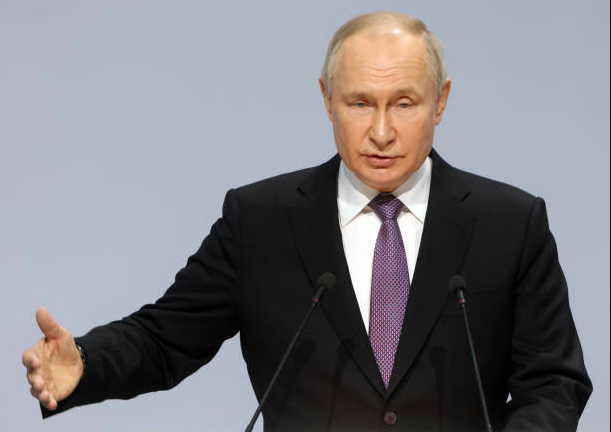A military chief has issued a warning about Vladimir Putin’s alleged use of a highly classified electronic warfare system to create turmoil in Europe.
According to reports, the weapon has been causing significant disruption by interfering with GPS technology on flights and ships on the eastern flank of Nato.
According to Estonian military chief Martin Harem, there has been a significant increase in disruptions to the GPS guiding system for air and sea traffic in Finland, the Baltic nations, and Poland.
“There appears to be a malfunction in the GPS systems used by ships and air traffic,” he stated.
“It remains unclear whether Russia has specific objectives in mind or if they are simply using this opportunity to practice and test their equipment.”
He emphasized the importance of maintaining proper behavior, particularly in times of conflict with a neighboring nation.
Estonia has become the first NATO country to publicly address the Kremlin’s disruptive actions.
According to reports, the electronic warfare system is believed to be located in Kaliningrad, a place that has gained attention due to a recent visit by Putin, which some view as a provocative gesture towards the West.
This region, located between Lithuania and Poland, was incorporated into Russia’s territory in 1945 after being taken from Germany. It held significant strategic importance for the Soviet Union during the Cold War period.
Experts have expressed concern about the possibility that Kaliningrad could launch an attack in the event of a conflict with NATO.
Based on reports from Western intelligence, there is a fixed jamming system known as Tobol. It appears to be a large dish with an antenna.
Several Tobol Complexes in Russia
According to the Washington Post, the secret weapon disrupts the transmission of signals on the same frequency as the satellite, causing connected devices to be unable to receive the legitimate signal.
According to Dr. Thomas Withington, an expert in electronic warfare, the dish has the capability to disrupt GPS signals in multiple directions. This could be crucial in safeguarding Kaliningrad and Russia against possible missile threats.
He claimed that the system has a defensive nature and is being utilized as a covert shield against Nato’s arsenal of satellite-guided missile systems.
Currently, though, the secret weapon is being employed against commercial airliners and sea vessels.
There have been recent incidents where planes have unexpectedly disappeared from tracking sites, possibly due to disruptions in their GPS systems.
Experts have issued a warning about the potential for significant harm to the shipping industry.
The concern is that vessels may collide as a result of their inability to detect one another on navigation systems.
“The unavailability of those systems is indeed a cause for concern. It highlights the irresponsible actions of the Russians from a navigation perspective.”
The increasing concerns over regional conflicts have heightened the likelihood of a potential World War Three.
Growing Threat to European Borders

There are concerns that the recent invasion of Ukraine by Putin could potentially lead to Russian troops extending their reach beyond Ukrainian borders, potentially posing a threat to Europe and potentially necessitating NATO’s involvement in the conflict.
Putin has issued numerous warnings to Western countries following his military intervention in Ukraine almost two years ago.
And recently, a leaked military report revealed what could be the Kremlin top’s step-by-step plan to bring the West to the brink of World War 3 – and it starts in weeks.
The classified documents contain information about a potential escalation of tensions, culminating in a significant military standoff between NATO and Russian forces in the summer of 2025.
In a move to address the potential security concerns, the Baltic states have reached an agreement to construct a series of bunkers along their borders with Russia and Belarus. These bunkers will serve as a protective measure for their forces in the event of any potential attacks.
Estonia has announced its intention to construct 600 concrete bunkers along its border with Russia, with an estimated cost exceeding £55 million.
Every bunker will be specifically designed to house a group of 10 military personnel for long durations, while also being equipped with life-support systems. The Estonian ministry’s sketches will serve as the basis for building a variety of bunkers with cleverly hidden T-shaped trenches.
